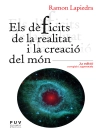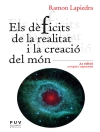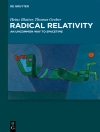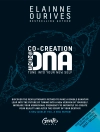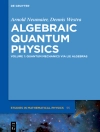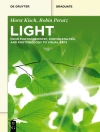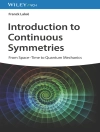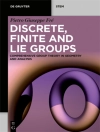This fourth edition of selecta of my work on the stability of matter contains recent work on two topics that continue to fascinate me: Quantum electrodynamics (QED) and the Bose gas. Three papers have been added to Part VII on QED. As I mentioned in the preface to the third edition, there must be a way to formulate a non-perturbative QED, presumably with an ultraviolet cutoff, that correctly describes low energy physics, i.e., ordinary matter and its interaction with the electromagnetic field. The new paper VII.5, which “quantizes” the results in V.9, shows that the elementary ‘no-pair’ version of relativistic QED (using the Dirac operator) is unstable when many-body effects are taken into account. Stability can be restored, however, if the Dirac operator with the field, instead of the bare Dirac operator, is used to define an electron. Thus, the notion of a “bare” electron without its self-field is physically questionable.
Tabella dei contenuti
The Stability of Matter: From Atoms to Stars.- Lower bound to the energy of complex atoms.- Improved Lower Bound on the Indirect Coulomb Energy.- Letter to the Editor.- Proof of the Stability of Highly Negative Ions in the Absence of the Pauli Principle.- Atomic and Molecular Negative Ions.- Bound on the maximum negative ionization of atoms and molecules.- Approximate Neutrality of Large-Z Ions.- Universal nature of van der Waals forces for Coulomb Systems.- Electron density near the nucleus of a large atom.- Proof of a conjecture about atomic and molecular cores related to Scott’s correction.- Asymptotics of Natural and Artificial Atoms in Strong Magnetic Fields.- Ground states of large quantum dots in magnetic fields.- Kinetic Energy Bounds and Their Application to the Stability of Matter.- Inequalities for the Moments of the Eigenvalues of the Schrödinger Hamiltonian and Their Relation to Sobolev Inequalities.- On Semi-Classical Bounds for Eigenvalues of Schrödinger Operators.- The Number of Bound States of One-Body Schroedincer Operators and the Weyl Problem.- Variational Principle for Many-Fermion Systems.- Thomas-fermi and related theories of atoms and molecules.- The Hartree-Fock Theory for Coulomb Systems.- There Are No Unfilled Shells in Unrestricted Hartree-Fock Theory.- Many-Body Atomic Potentials in Thomas-Fermi Theory.- The Positivity of the Pressure in Thomas Fermi Theory.- The Thomas-Fermi-von Weizsäcker Theory of Atoms and Molecules.- Analysis of the Thomas-Fermi-von Weizsäcker Equation for an Infinite Atom Without Electron Repulsion.- The most negative ion in the Thomas-Fermi-von Weizsäcker theory of atoms and molecules.- Bound for the Kinetic Energy of Fermions Which Proves the Stability of Matter.- Stability of Coulomb Systems with Magnetic Fields.- Stability of Coulomb Systems with Magnetic Fields.- Stability of Matter in Magnetic Fields.- The Chandrasekhar Theory of Stellar Collapse as the Limit of Quantum Mechanics.- One-Electron Relativistic Molecules with Coulomb Interaction.- The Stability and Instability of Relativistic Matter.- Stability of Relativistic Matter via Thomas-Fermi Theory.- Stability and Instability of Relativistic Electrons in Classical Electromagnetic Fields.- The stability of matter.- Existence of Thermodynamics for Real Matter with Coulomb Forces.- The Thermodynamic Limit for Jellium.- Self-Energy of Electrons in Non-Perturbative QED.- Ground states in non-relativistic quantum electrodynamics.- Existence of Atoms and Molecules in Non-Relativistic Quantum Electrodynamics.- A Bound on Binding Energies and Mass Renormalization in Models of Quantum Electrodynamics.- Stability of a Model of Relativistic Quantum Electrodynamics.- Bosonic Systems.- Ground State Energy of the Low Density Bose Gas.- Bosons in a trap: A rigorous derivation of the Gross-Pitaevskii energy functional.- The N5/3 Law for Bosons.- The N7/5 Law for Charged Bosons.- Ground State Energy of the One-Component Charged Bose Gas.- Ground State Energy of the Two-Component Charged Bose Gas.- Proof of Bose-Einstein Condensation for Dilute Trapped Gases.- Superfluidity in dilute trapped Bose gases.- One-Dimensional Basons in Three-Dimensional Traps.



